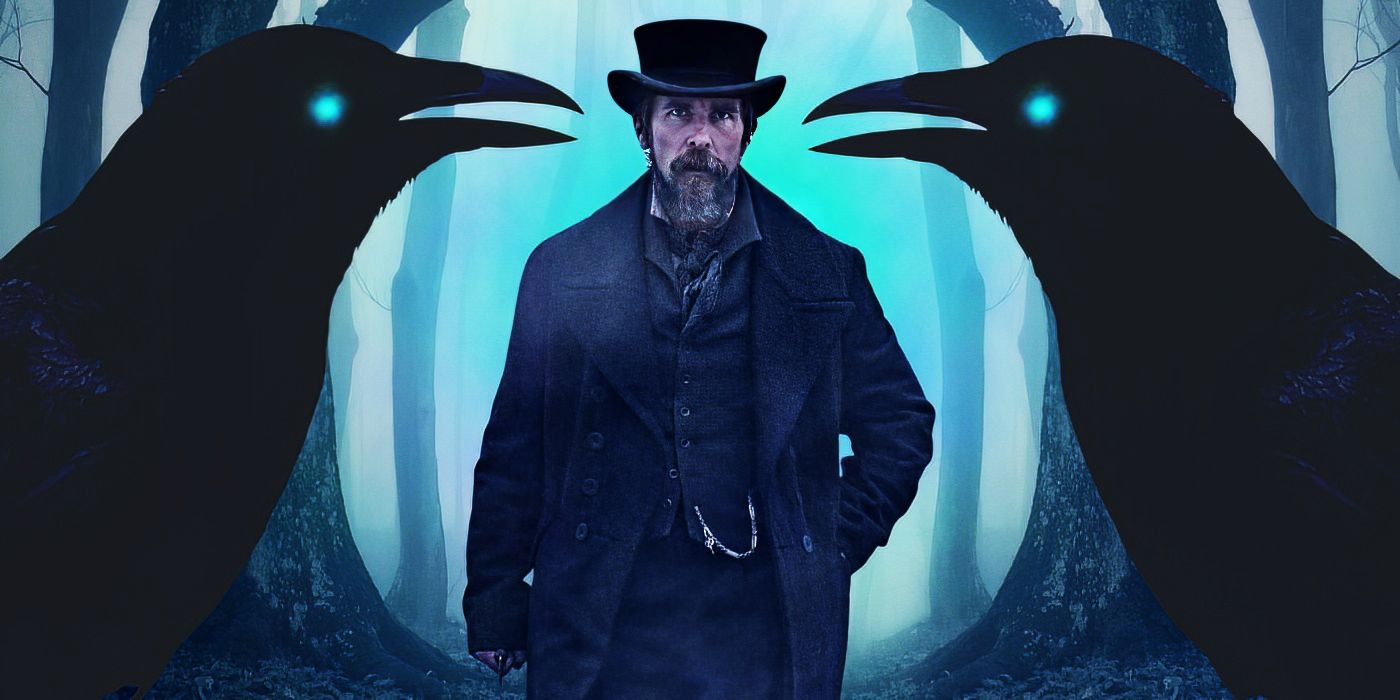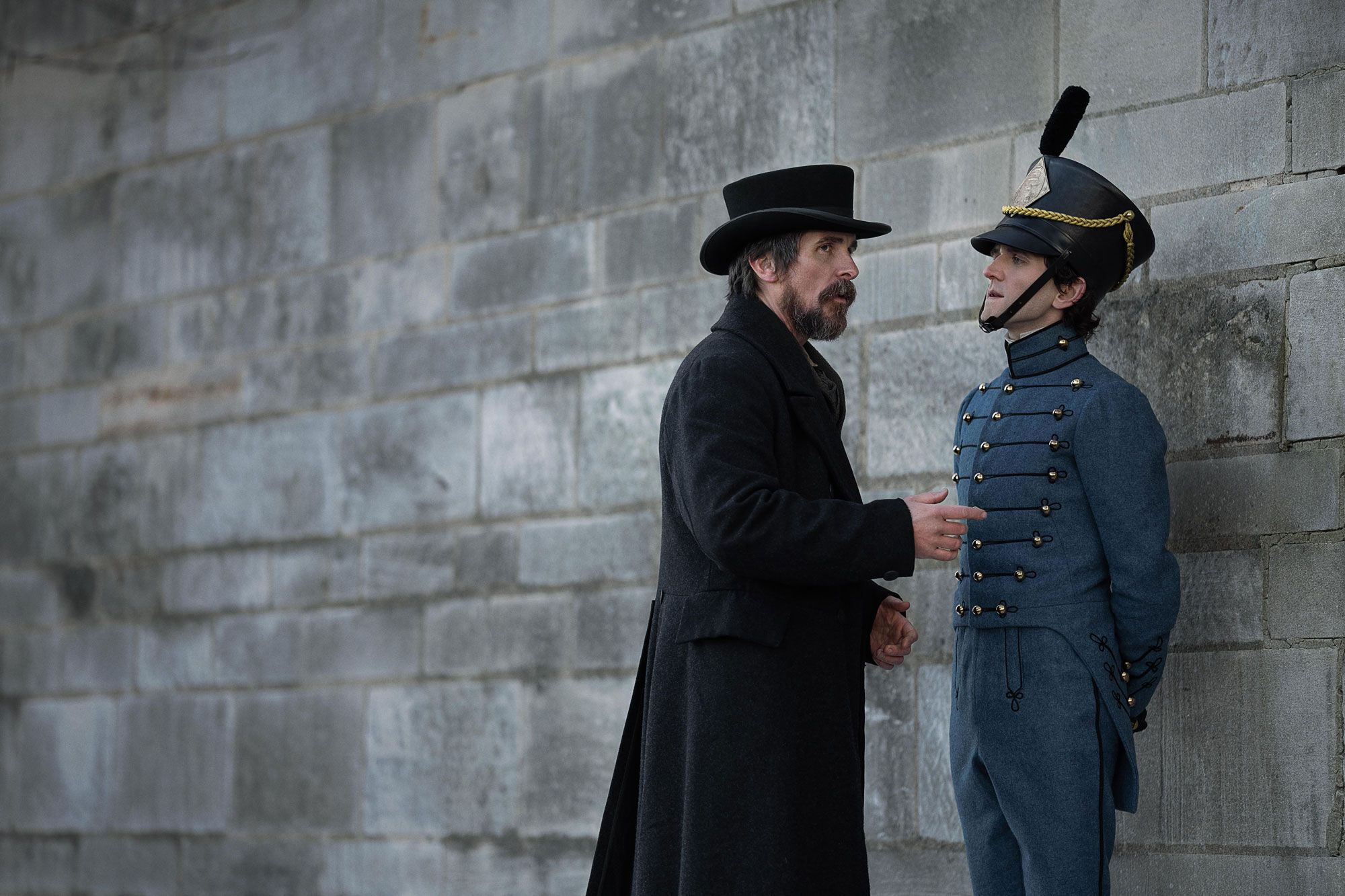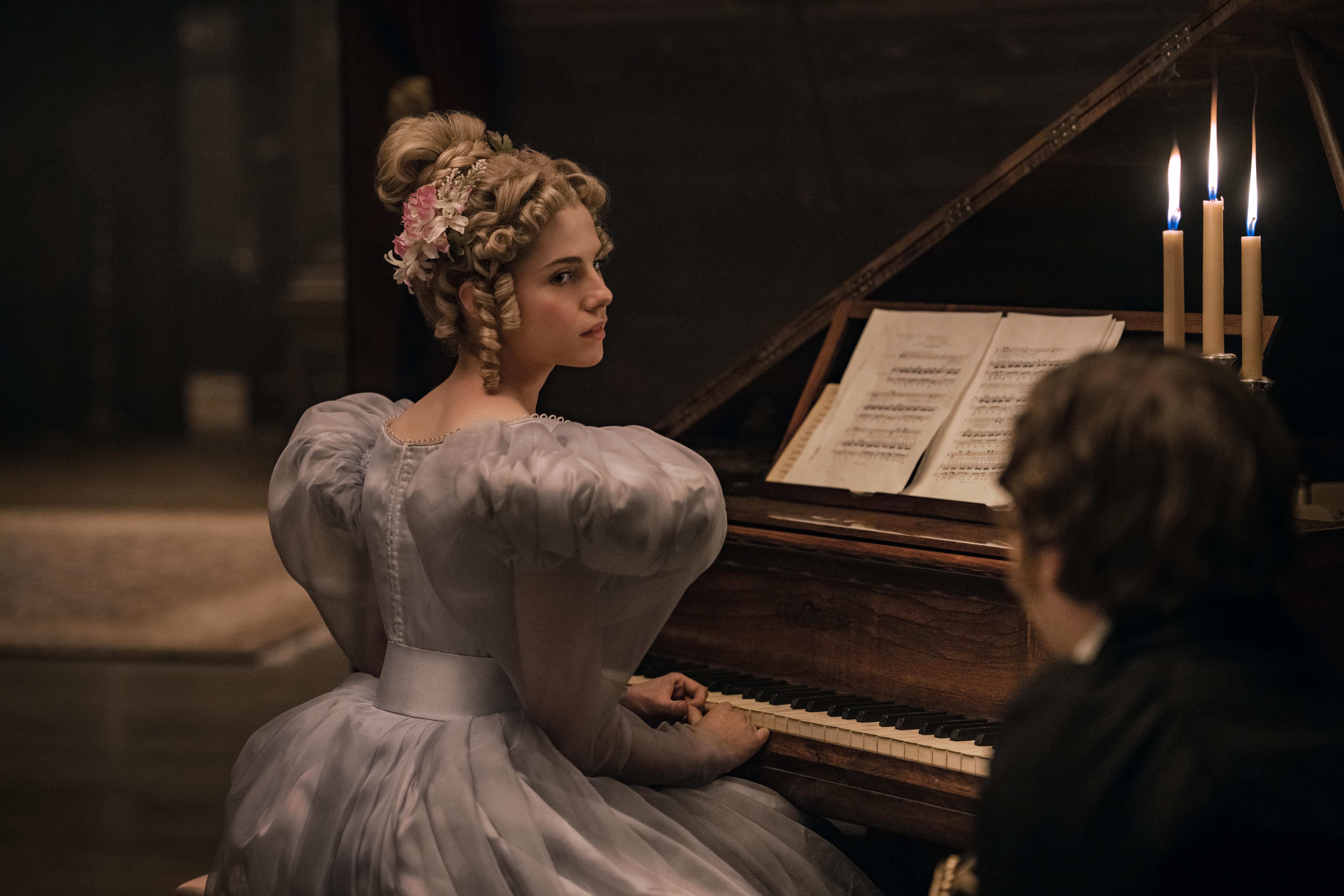Released on Netflix on January 6, The Pale Blue Eye has already gained a lot of traction and is currently the number one movie on the platform. Directed by Scott Cooper and starring Christian Bale and Harry Melling, the film follows Detective Augustus Landor (Bale) and a young Edgar Allan Poe (Melling) as they pair up to solve a murder at West Point Academy. But are the events that take place in The Pale Blue Eye rooted in facts? Did Poe actually help a detective when he was a young cadet to solve a murder? Is this what inspired all the macabre work he would later publish? Unfortunately, these events for the most part, are completely fictitious.
'The Pale Blue Eye' was Adapted from a Novel
While it would’ve been an incredible real life story in the early life of one of America’s most profound literary figures, The Pale Blue Eye is actually based on a crime novel written by Louis Bayard. The book originally came out in 2003 and received nominations for several literary awards, including the Edgar Allan Poe Awards and Crime Writers’ Association Dagger Awards. The novel is solely fiction, just as the movie is.
Poe's Life at West Point
The overall story of The Pale Blue Eye does have a sliver of truth in it. Edgar Allan Poe did attend West Point Academy as a cadet from 1830-1831. Attending under the funding of his foster father, John Allan, Poe performed excellently at the academy. However, Poe was shocked to learn in a letter from his father that Allan would no longer maintain communication with Poe because he had just become the father to illegitimate twins. Enraged, Poe decided to purposefully get himself kicked out of West Point. Poe no longer attended classes and obtained a lengthy disciplinary record, resulting in him, as he intended, being court-martialed. Poe left West Point in January 1831 and eventually ended up in New York, where he published his book, Poems.
There is also no evidence of the character of Lea Marquis, played by Lucy Boynton, to have existed or inspired the recurring ‘Lenore’ in Poe’s work. Lenore is most likely based on Poe’s wife, Virginia Eliza Clemm, or even Poe’s earlier sweetheart who married another, Elmira Royster.
Poe's Success
Following his short time at West Point was when Poe’s literary career really took off. He began to receive literary critical acclaim and success and ultimately became one of America’s most successful writers. While he wrote and published poems before West Point, none of them really garnered any attention. It wasn’t until after he was court-martialed from the academy that his career took off. There is no record of Poe being involved in any murder investigation while at West Point that suggests the events in The Pale Blue Eye are true. However, perhaps in addition to Poe’s ire toward his foster father, something occurred at West Point that fueled his creativity. Whatever the cause, it was at West Point where it seems Poe shifted from being a mediocre poet to a genius.
Though The Pale Blue Eye is almost entirely fictitious, it does paint Poe in a more sympathetic light. While many may assume Poe, due to the nature of his work, to be brooding or dark, The Pale Blue Eye offers a different perspective on the poet. By making Poe charming, passionate, humorous, and slightly awkward, the film helps Poe become more relatable and human. Poe isn’t just a poet of the macabre in The Pale Blue Eye, but a dreamer, romantic, and above all, a loyal friend. Even if this portrayal isn’t steeped in fact, as no one can really know Poe’s personality, the film positively adds to Poe’s legacy and delivers a dark yet entertaining story that is sure to satisfy viewers and inspire them to revisit Poe’s work.



